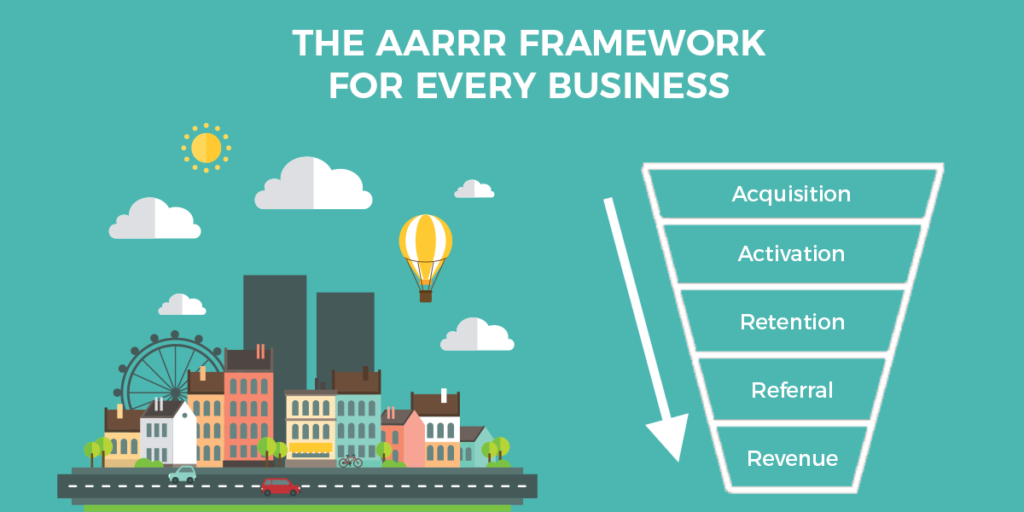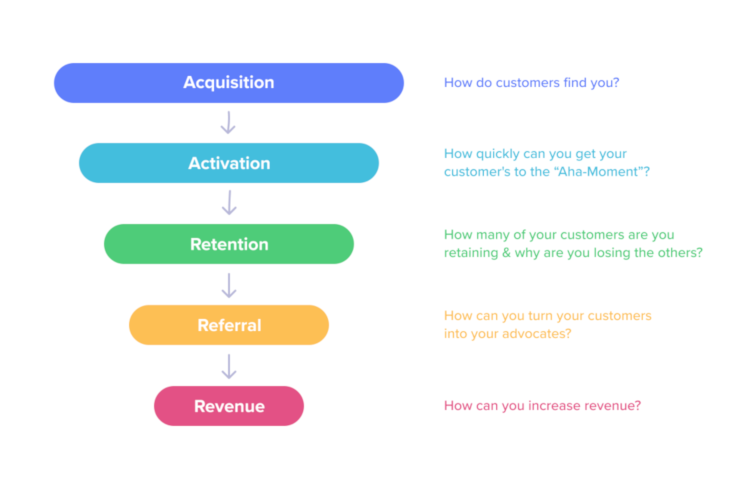The Growth Hacker in the tunnel: the AARRR matrix

Le Growth Hacker dans le tunnel : la matrice AARRR. Every Growth Hacker works, consciously or unconsciously, but more often consciously, from a schema that can be summarized from the AARRR matrix. It was Dave McClure, entrepreneur and business angel, who first proposed this matrix. The latter describes, more broadly, the functioning of any technology start-up. A better understanding of it also means a better understanding of Growth Hacking.
AARRR is an acronym for Acquisition – Activation – Retention – Referral – Income. This matrix defines the different successive steps a Growth Hacker should focus on. This is the conversion tunnel, no more and no less.

Acquisition
The first step in the work of a GH and a start-up is to attract Internet users to a service (via different channels: social networks, SEO, SEA, etc.). To make a successful acquisition, the value proposition of the service proposed must be sufficiently relevant and the Internet user must be able to visualise it very quickly (hence the importance of landing pages). Example of a value proposition: « rent from the locals for less than a hotel and with more user-friendliness » (Airbnb’s value proposition).
Activation
Once the Internet users have arrived on the landing page, have seen the value proposition, you have to get them to buy in. In other words: turn the Internet user into a user. A typical way to measure the degree of activation: subscriptions (newsletter, RSS feeds or other). In order to succeed in this step, it is necessary to ensure that the user has a satisfactory first experience of the product or service. He has to say to himself « ah yes, not bad, well go I subscribe ». For Uber, for example, one way to optimize activation is to show cars moving live.
Retention
The Growth Hacker must ensure that users of the service become active and use it regularly, for example through regular updates, new features, the proposal of new functionalities, the organization of events, discount vouchers, loyalty programs… This step is sometimes overlooked, but it is a mistake that leads straight to the shopping cart syndrome. It’s important to work on retention before you even try to make a referral. Retention work is the sine qua non of the product/market fit. It can be said that if you have reached this stage of M/M fit, the start-up has every chance of making a breakthrough. This means that the start-up has been able to create its market or seize a pre-existing demand. People like it. All that’s left to do is to pursue the vein. Retention is perhaps the most crucial step for start-ups, and that’s where the good GHs do the most work.
Referral
At this stage, every effort should be made to ensure that active users of the service become ambassadors of the service to their network. We are here at the heart of Growth Hacking: virality. It is virality that will allow the user base to grow exponentially or by geometric growth. The Growth Hacker can use a whole range of actions to increase the refferal: sponsorship offers, promotional codes, contests, etc… The inventiveness of GH is limitless.
Revenues
This last step consists of transforming active users into revenues. This is the stage towards which all GH’s work tends, but which, however, only comes to an end. It is the monetisation stage (advertising, subscription…) during which prospects become real customers.
This matrix explains the Growth Hacker philosophy very well. In the first stage (the…first four stages!), the Growth Hacker does not try to make money at all. Its goal is to increase the number of users of the service. To ensure sustainable growth, the GH focuses all its attention on the quality of the users, hence the importance of the activation and retention phases.
Only once the user base becomes sufficiently large and users have become sufficiently active can the work of monetization (the last stage) begin. The Growth Hacker is therefore not an ox that rushes headlong towards the Growth Goddess, as our first definition of GH might have suggested. He wants qualified and sustainable growth, the only growth that can make the start-up’s business sustainable.